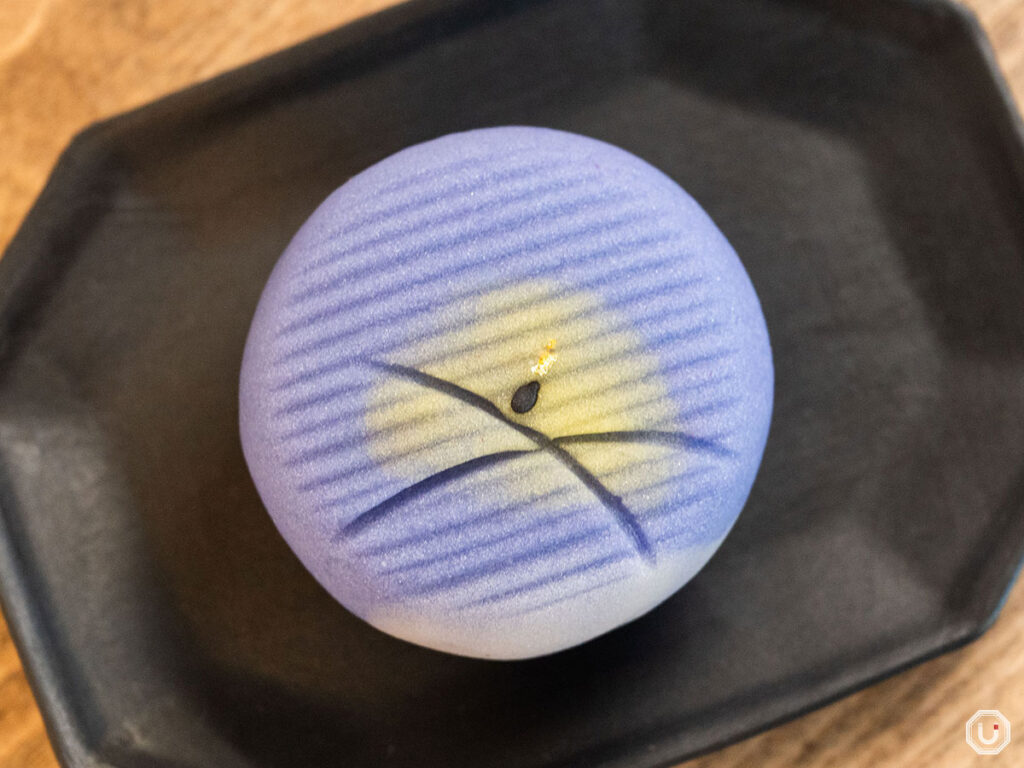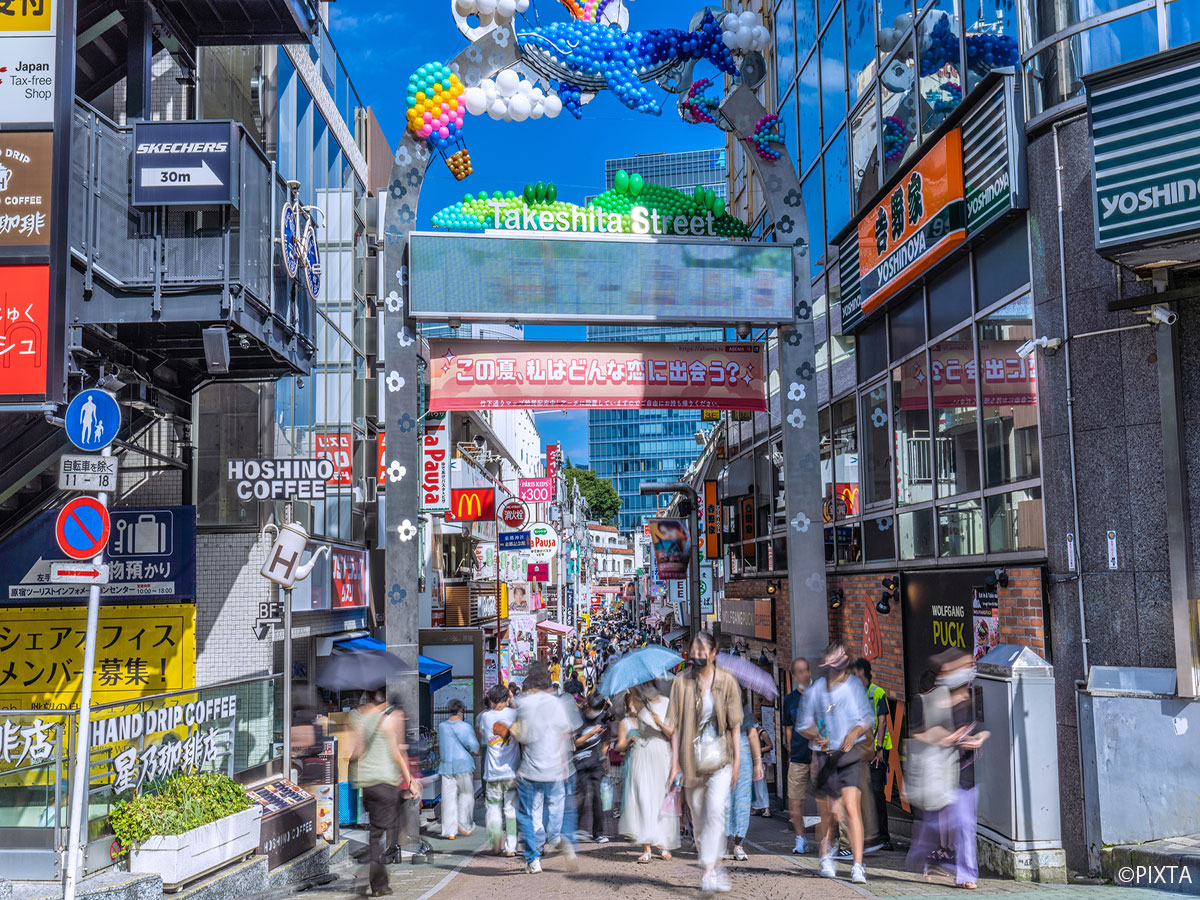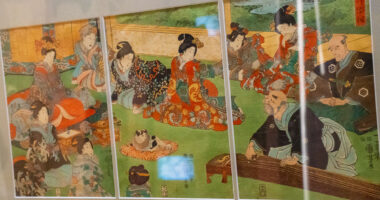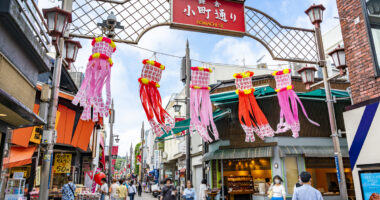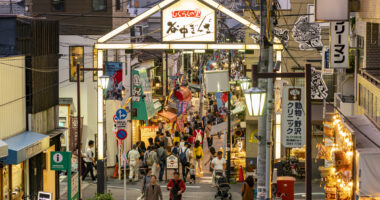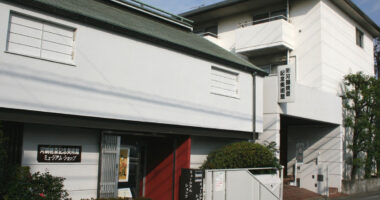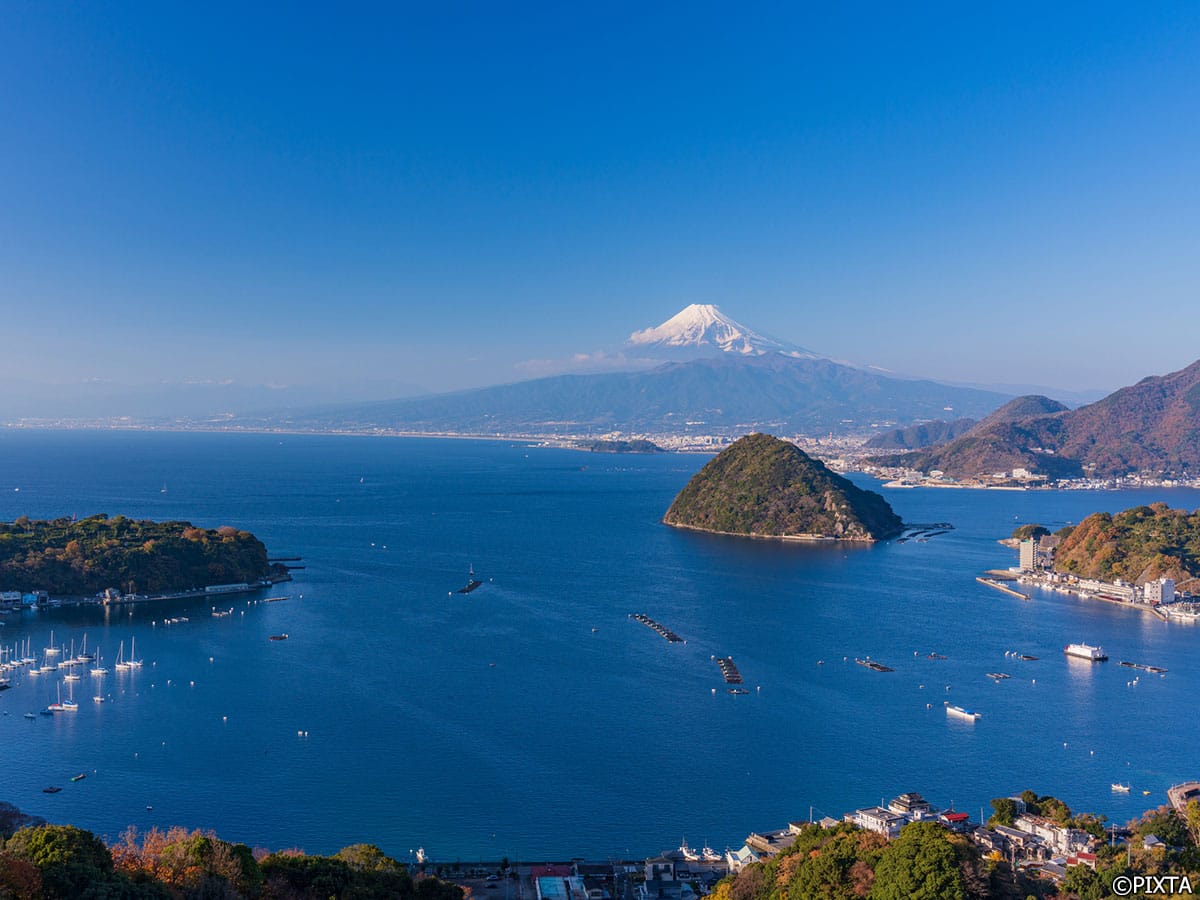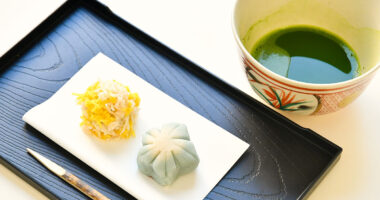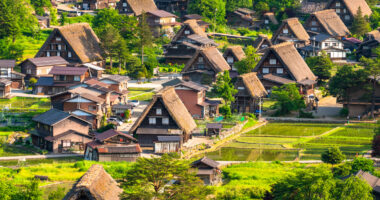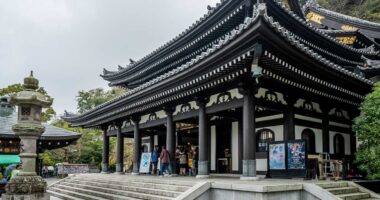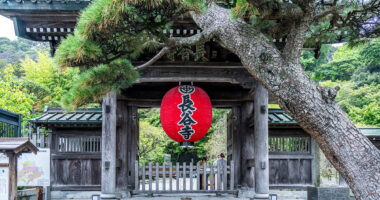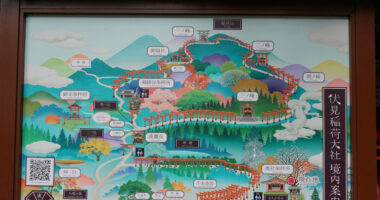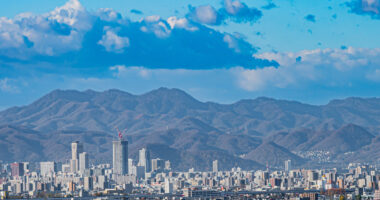Drawn in by the charm of tradition and the delicate sweet aroma in the air, it’s easy to find yourself wandering into a wagashi (traditional Japanese sweets) shop during a stroll through the city.
If there’s even an eat-in space, it’s the perfect excuse to take a short break.
From masterfully crafted jōnamagashi (premium Japanese sweets) to seasonal anmitsu (a traditional Japanese dessert featuring agar jelly and red bean paste, often with fruit) and a variety of matcha-paired treats, Tokyo is full of shops where you can enjoy wagashi that are as beautiful to look at as they are delicious to eat.
“MATSUNARI” in Roppongi: ohagi
Located in Roppongi Hills’ North Tower, “MATSUNARI” specializes in ohagi — traditional Japanese sweets made by wrapping sweet azuki (red bean paste) or kinako (roasted soybean flour) around balls of glutinous rice. These humble treats have been enjoyed for generations and offer a small everyday luxury.
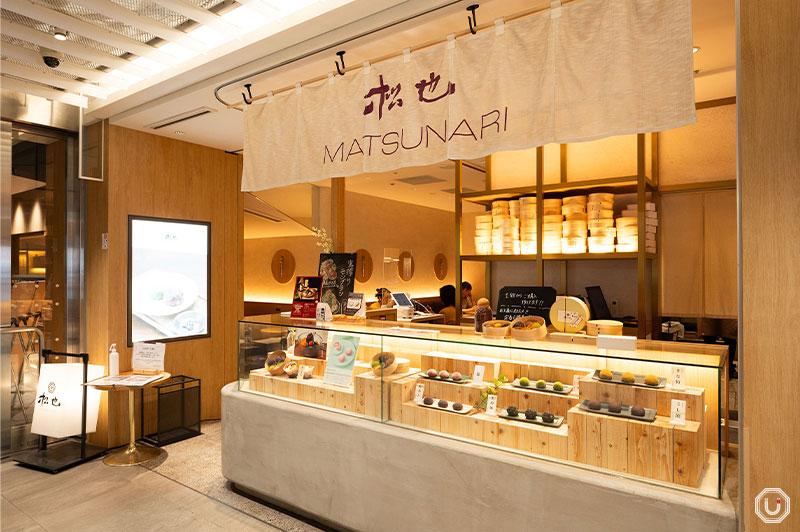
Exterior of MATSUNARI
The shop always offers six varieties of ohagi, with the most popular being tsubuan (chunky red bean paste) and koshian (smooth red bean paste).
The “TSUBUAN” is made with homemade red bean paste prepared in-store, using large-sized Tamba Dainagon Azuki beans. Its appeal lies in the satisfying texture, where both the interior and skin of the beans remain pleasantly intact in each bite.
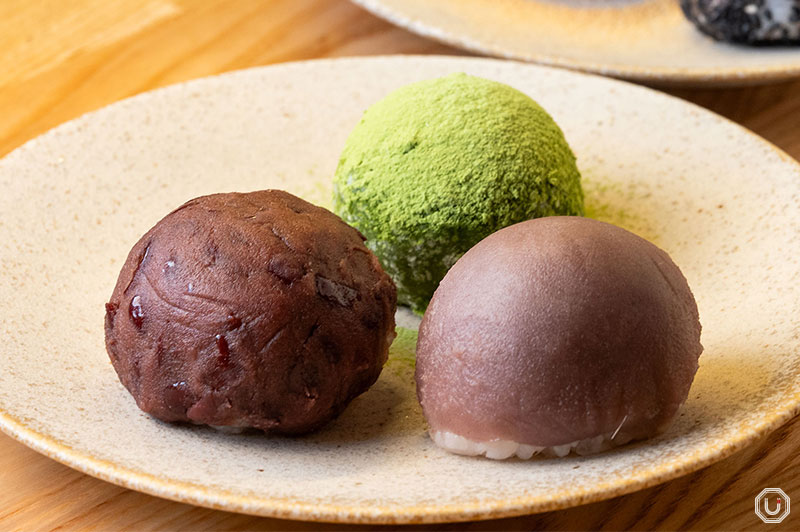
(front left) TSUBUAN, (front right) KOSHIAN, (back) MIDORI 350 JPY apiece (tax included)
The “KOSHIAN,” on the other hand, uses silky smooth bean paste specially ordered from Kinoshita Seian, a maker with over 90 years of history.
The “MIDORI,” made with matcha and yomogi (Japanese mugwort) kneaded into the dough, offers a subtle touch of pleasant bitterness.
For dine-in guests, pairing your ohagi with a matcha latte is also recommended. You can enjoy the ohagi on its own or as a set with a drink—it’s up to you!
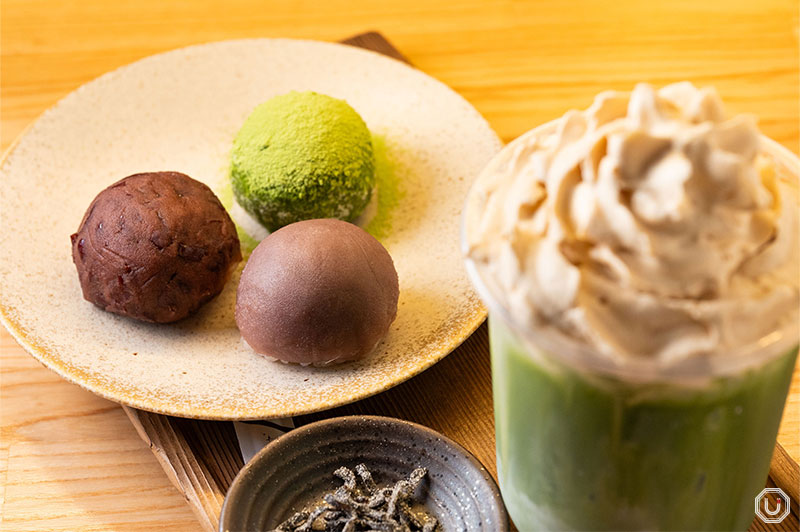
MATCHA LATTE 680 JPY (tax included) / Set: menu item + 300 JPY (tax included)
“Funawa” in Asakusa: yōkan
Founded in 1902, “Funawa Honten” is a long-established wagashi brand with shops across Japan. Its main store sits in the heart of Asakusa’s bustling shopping streets, with a café space on the second and third floors where you can relax and enjoy the store’s specialties.

Cafe space at Funawa Honten
The signature treat, beloved since the shop’s founding, is the “Sweet bean paste balls” (“anko-dama” in Japanese). Sweetened red bean paste is rolled into bite-sized spheres and coated with a thin layer of agar jelly.
There are six flavors in total. The classic azuki beans features smooth koshian, while the others—“white kidney beans” (shiroingenmame, meaning “white beans” in Japanese), “matcha,” “strawberry,” “coffee,” and “mandarin orange”—are made with a white bean paste base infused with each distinctive flavor.
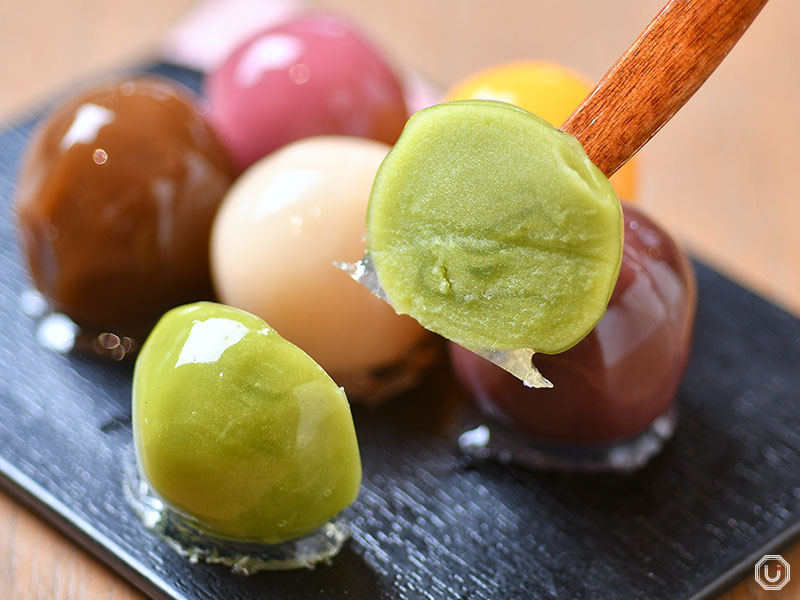
Sweet bean paste balls 130 JPY each (tax included)
While the sweet bean paste takes center stage, the sweetness is kept subtle, leaving a refined aftertaste. Their petite size makes it all too easy to reach for “just one more.”
You can order from just a single piece, and pairing them with a drink set is also recommended. Enjoy the flavors of this long-established shop in a casual way.
Another signature item available in the café space is the “Baked sweet potato bar set.”

Baked sweet potato bar set 1,200 JPY (tax included)
This must-try bang-for-your-buck set includes a grilled version of the shop’s signature imoyōkan (a traditional jellied dessert made from sweet potatoes), matcha, monaka (a confection featuring a sweet filling, usually bean paste, sandwiched between rice flour wafers), and vanilla-flavored ice cream.
Indulge in this set with the butter served on the side—the combination of its roasted aroma and rich sweetness is truly delightful.
Be sure to try this together with the Sweet bean paste balls as well!
“Azabu Yasaigashi” in Azabu-juban: monaka
With the concept of “a little luxury made from vegetables,” “Azabu Yasaigashi” offers a unique line-up of sweets that showcase seasonal produce.
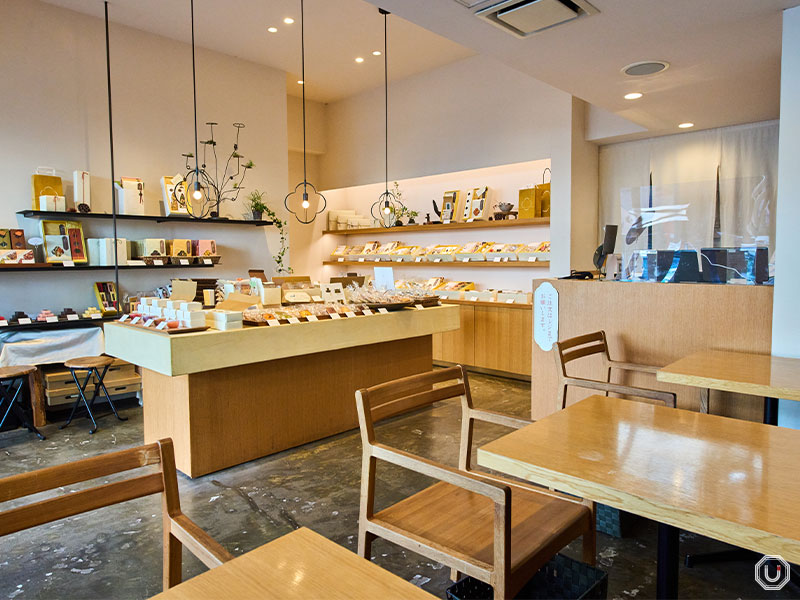
Interior of Azabu Yasaigashi
In the attached eat-in space, you can enjoy sweets made with seasonal vegetables, but a definite must-try when visiting the shop is their signature treats sold at the counter, the “Vegetable jam filled wafers.”
These are monaka. As explained above, monaka is a traditional Japanese sweet consisting of crisp, fragrant wafers made from glutinous rice, filled with sweet red bean paste.
The shop’s monaka filled with vegetable jam come in seasonal varieties as well as standard flavors like “Sweet potato,” “Black sesame,” and “Lotus root,” each offering the natural sweetness and richness of the ingredients.
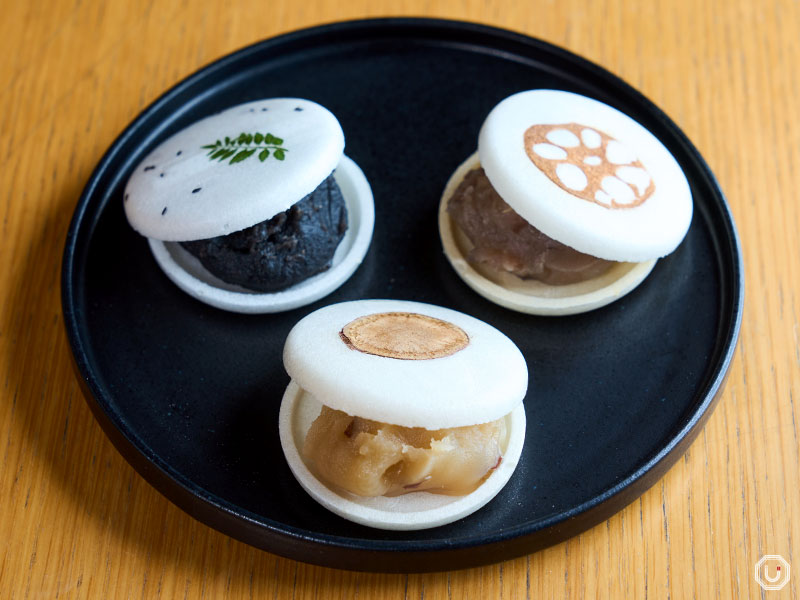
(back left) Black sesame, (back right) Lotus root, (center) Sweet potato 356 JPY (tax included)
The refined and gentle flavors can be appreciated by people of all ages. The individually wrapped packaging is also charming, making it a great choice for souvenirs or gifts.
At the eat-in space, you can enjoy kakigōri (shaved ice) and cakes, then pick up their signature monaka as a souvenir to savor leisurely at home.
“Imagashitsukasa Ginza Fugetsudo” in Ginza: anmitsu
Anmitsu, as expained above, is a traditional Japanese sweet made with agar derived from seaweed, served alongside sweet red bean paste.
At “Imagashitsukasa Ginza Fugetsudo” in Ginza, skilled artisans carefully prepare each serving right before your eyes.
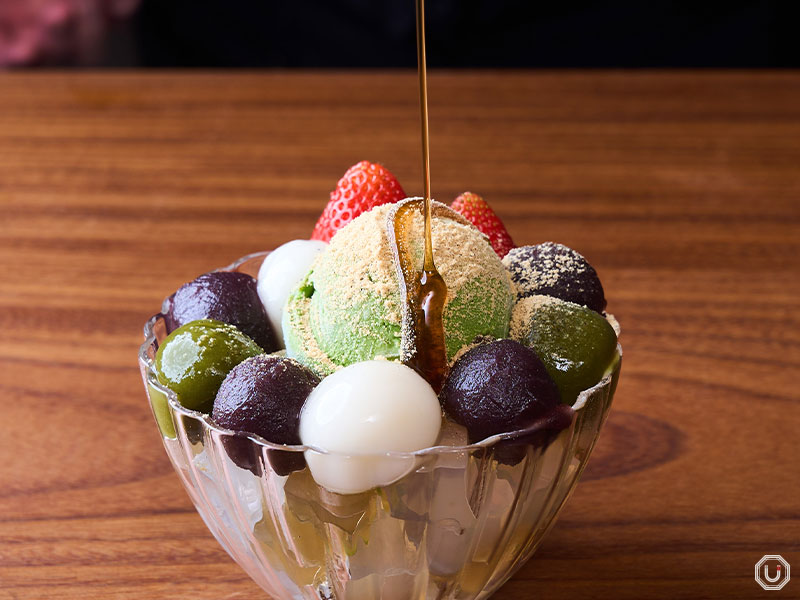
Matcha Cream Anmitsu (with drink) 2,700 JPY (tax included)
The two-tone shiratama (rice flour dumplings) in matcha and plain flavors, colorful seasonal fruits, and fragrant Uji matcha ice cream are artfully arranged in the bowl, creating a feast for the eyes as well as the palate.
All ingredients are carefully selected, offering an elegant taste and rich aroma.
The freshly prepared shiratama have a delightfully chewy texture, the matcha ice cream brings a gentle bitterness, and the sweet and tart fruits combine to create a treat where each bite reveals a new deliciousness.
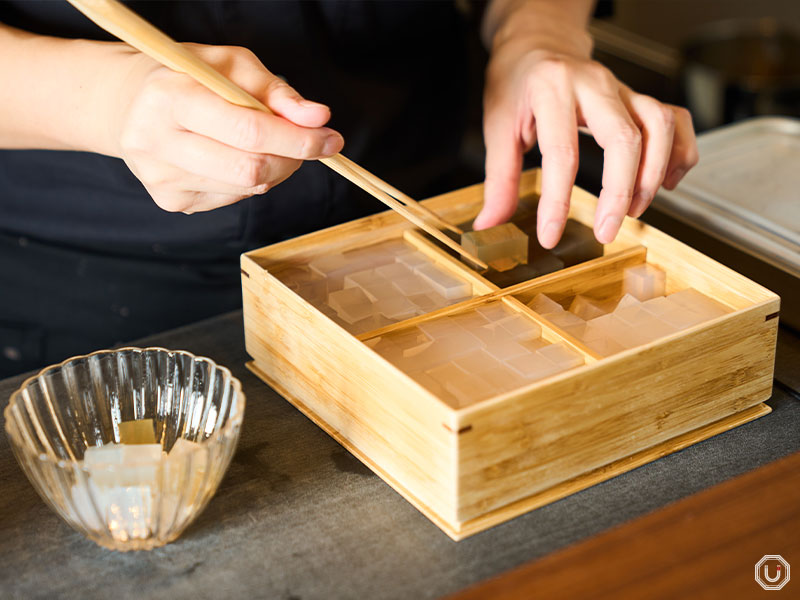
Making Matcha Cream Anmitsu
“Mahorodou Sougetsu” in Setagaya: jonamagashi
So delicately refined they resemble works of art, high-quality wagashi known jonamagashi are a feast for the eyes. At “Mahorodou Sougetsu” in Setagaya, you can leisurely enjoy jonamagashi inspired by seasonal landscapes and plants at the adjoining table seating area.
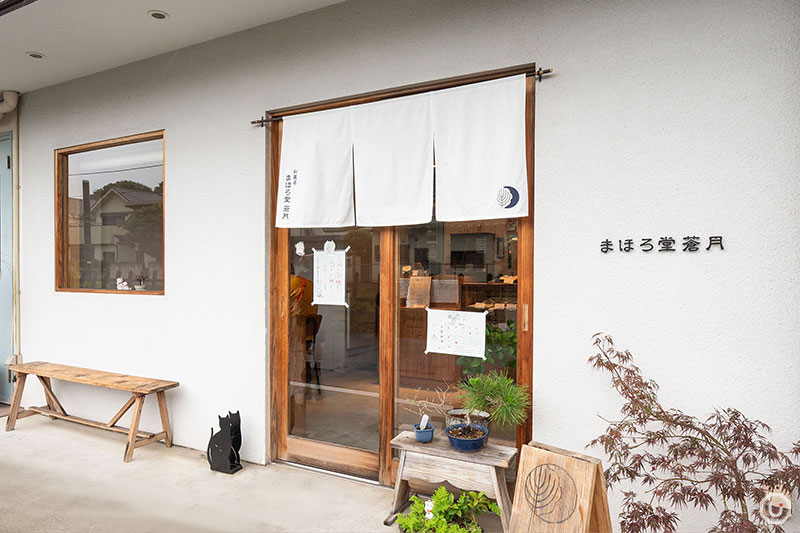
Exterior of Mahorodou Sougetsu
These top-end wagashi creations, so revered they’re even used at tea ceremonies, mainly feature sweet red bean paste, and pair exquisitely with the bitterness of matcha or other bitter teas to create a perfect balance of sweetness.
It’s a moment to please both the eyes and the palate, evoking the refined elegance of the changing seasons.
With each visit, the world of these confections reveals a new expression, hooking you with its charm.
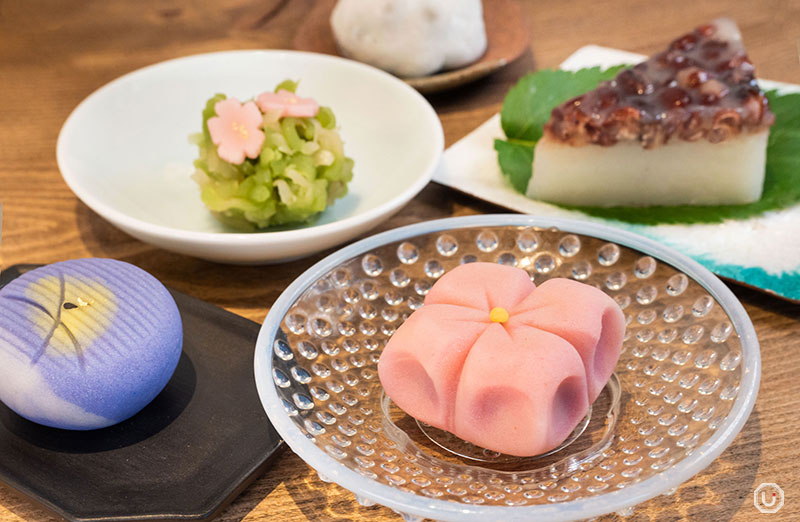
Wagashi at Mahorodou Sougetsu
The world of wagashi, enjoyed through all five senses, holds its own unique charm and beauty at every shop, offering new discoveries with each visit.
Taking the time to savor these carefully crafted sweets in a calm setting brings a special moment that gently enriches everyday life, as well as your journey through Japanese cuisine.
※Menu items, prices, and store details are accurate as of August 2025.
